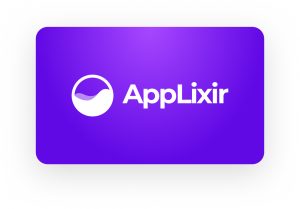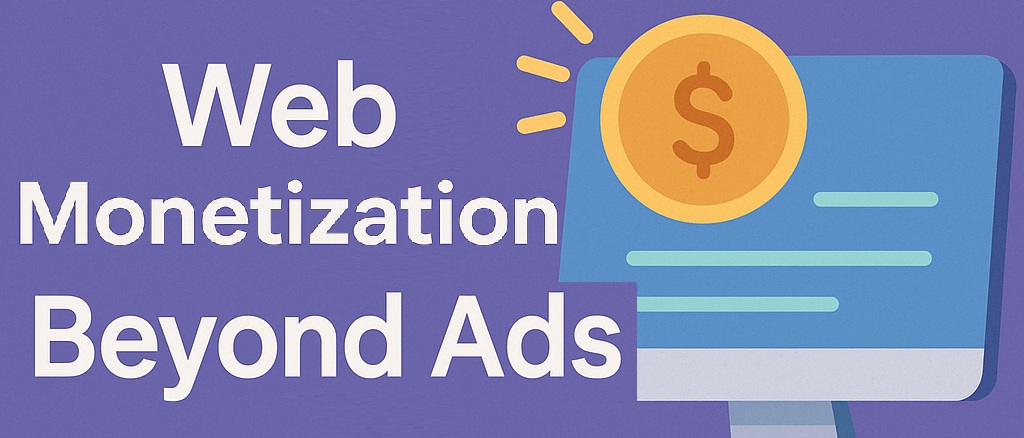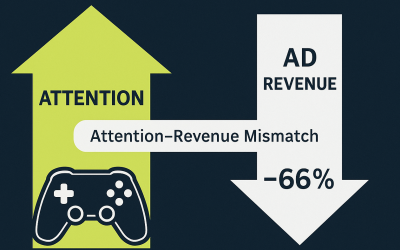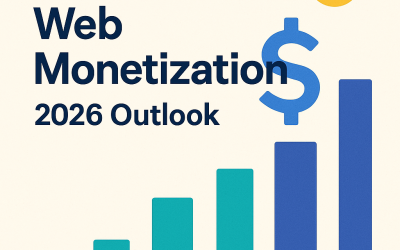Web Monetization 101: Beyond Ads
For decades, online content has been funded primarily by advertising or locked behind subscriptions. This has led to a web full of intrusive banner ads, invasive trackers, and paywalls—approaches that often frustrate users.
The numbers tell a stark story: 42% of internet users now use ad-blockers, while only 17% of Americans pay for online news subscriptions. These opposing trends create what we might call “ad fatigue” and “subscription fatigue”—a perfect storm that challenges developers and content creators seeking sustainable revenue. In response, the industry is exploring innovative monetization models that aim to balance user experience with creator revenue. Let’s dive into the most promising alternatives to traditional advertising.
Contents
- 1 The Need for Alternative Models
- 2 Browser Wallets and Token-Based Monetization
- 3 Micropayments and the Web Monetization API
- 4 Rewarded Video Ads (Value-Exchange Advertising)
- 5 Subscription Integrations and Membership Models
- 6 Comparing Approaches: Finding Your Mix
- 7 The Future is Hybrid
- 8 Summary from AppLixir Monetization
The Need for Alternative Models
Relying solely on ads compromises both privacy and user experience, while forcing subscriptions can alienate large portions of your audience. The current ad-driven model has created a broken business ecosystem for the open web.
Modern publishers need more flexible, user-friendly ways to fund content. Below, we’ll explore four emerging monetization approaches and how they stack up against traditional advertising.
Browser Wallets and Token-Based Monetization
One of the most innovative approaches involves integrated browser wallets and token systems that reward user attention. Instead of forcing ads on users, the browser itself becomes a monetization tool.
The Brave Browser Model
Brave browser exemplifies this approach with its Basic Attention Token (BAT) system. Here’s how it works:
- Brave blocks regular ads by default to protect privacy
- Users can opt in to see privacy-respecting ads
- In exchange, users earn BAT cryptocurrency
- Users can then tip their favorite websites or creators with earned tokens
This model flips the traditional script: users get paid for their attention and have full control over their experience. They can choose ad frequency or turn ads off entirely, and their browsing data stays local.
Benefits for Creators and Users
Content creators benefit by receiving BAT contributions or tips from users, either as one-time payments or automatically based on time spent on their site. The browser acts as a crypto-wallet, enabling seamless micro-transactions.
Comparison with Traditional Ads: Unlike standard ads imposed on users, token-based rewards are opt-in and user-centric. They align incentives by compensating users for attention while publishers get paid without serving invasive ads.
The Trade-off: These systems require new infrastructure (tokens, wallets, creator verification) and are still gaining mainstream adoption. For developers, integrating with platforms like Brave provides an additional revenue stream, especially among privacy-conscious audiences.
Micropayments and the Web Monetization API
What if users could pay a few cents for each piece of content they enjoy, instead of viewing ads or committing to large subscriptions? Micropayments—typically less than $1—allow users to pay for digital content à la carte.
How Web Monetization Works
The Web Monetization API is an emerging web standard that enables streaming micropayments directly in the browser. Here’s the process:
- Users link their browser to a wallet via a payment pointer
- When visiting a web-monetized site (with a monetization meta tag), the browser automatically sends tiny payments
- Payments stream every second the user spends on the page
- This happens seamlessly in the background after initial setup
The result? An ad-free experience where creators earn revenue and users support content incrementally without hefty fees.
Real-World Implementation
Services like Coil (active until 2023) demonstrated this model effectively. Users paid a fixed monthly fee (~$5), which Coil then streamed as micropayments (~$0.36 per hour) to any enabled website the user visited.
From a developer perspective, implementation was remarkably simple: add a meta tag with your wallet pointer—a one-line code change—to start receiving payments.
Benefits and Challenges
Benefits:
- Sustainable alternative to ads and subscriptions
- Users pay only for consumed content
- Lower barrier for casual readers to become payers
- Direct compensation without middlemen
Challenges:
- User adoption barriers (wallet setup, pre-funding accounts)
- “Mental transaction cost”—the psychological effort of micro-decisions
- Need for widespread creator support to generate meaningful revenue
The Interledger Foundation continues developing this standard, with recent efforts focusing on integration with traditional payment rails rather than cryptocurrency, potentially reducing friction and complexity.
Rewarded Video Ads (Value-Exchange Advertising)
Not all “beyond ads” monetization means eliminating advertising entirely. Rewarded video ads represent a middle ground where users consciously choose to watch advertisements in exchange for rewards.
The Opt-In Advantage
This model has proven hugely successful in mobile games and is now expanding to web content. Examples include:
- Watch a 15-second video to read a premium article
- View an ad to unlock temporary subscription features
- Earn virtual goods or discount coupons
- Donate ad revenue to charity on your behalf
Google’s Offerwall feature in Ad Manager enables publishers to offer choices: watch an ad, take a survey, or pay a small fee to access content.
Why It Works
Rewarded ads feel less intrusive because users control the experience. Since viewing is voluntary, completion rates and attentiveness are high, leading to higher CPMs for advertisers.
Key Implementation Considerations:
- Offer rewards at logical break points
- Ensure rewards are genuinely valuable to users
- Don’t overuse “watch ad” prompts
- Balance free access with monetization needs
Subscription Integrations and Membership Models
While subscriptions aren’t new, their integration into web content is evolving rapidly. The trend is toward hybrid models that combine subscriptions with free or ad-supported options.
Modern Subscription Strategies
Successful 2024 subscription models often include:
- Tiered access: Free ad-supported content plus premium ad-free tiers
- Seamless integration: Tools like Subscribe with Google for one-click signups
- Micro-subscriptions: Weekly passes or day-long access options
- Creator-focused platforms: Patreon, Substack, Memberful integrations
Advantages and Challenges
Advantages:
- Stable, predictable income
- Deeper user engagement and community building
- Independence from volatile ad markets
Challenges:
- Subscription fatigue among users
- Difficulty converting casual readers (typically single-digit percentages)
- Technical complexity of secure payment systems
The key is finding the sweet spot between free content sampling and premium value that justifies subscription costs.
Comparing Approaches: Finding Your Mix
Each monetization model offers different trade-offs:
- Micropayments and subscriptions ask users to pay money for ad-free, high-quality experiences
- Browser token models require ecosystem adoption but align user and creator incentives
- Rewarded ads keep content free while giving users control over their “payment method”
- Traditional ads offer simplicity but often compromise user experience and privacy
The Future is Hybrid
The most successful approach isn’t choosing one model—it’s combining them strategically. A single website might simultaneously offer:
- Display ads for casual visitors
- Rewarded video options for paywall encounters
- Micropayment integration for Web Monetization users
- Subscription tiers for loyal fans
This pluralistic approach ensures you’re monetizing different audience segments in their preferred way.
Summary from AppLixir Monetization
Web monetization is entering a new era beyond simple banner ads. These emerging models are more user-centric and equitable, respecting user privacy and choice while enabling creators to earn more directly from those who value their work.
For developers: Keep an eye on standards like the Web Monetization API and evolving browser capabilities. Experiment with diversified monetization strategies.
For content creators: Test different models to see what resonates with your audience. What works for a gaming app might differ from a news blog, but providing options is key.
The goal is a healthier online ecosystem where quality content can flourish without forcing users to endure obnoxious ads or manage dozens of subscriptions. By blending these new approaches, we can move toward a web that rewards creators while treating users fairly—a true win-win for the open web’s future.



